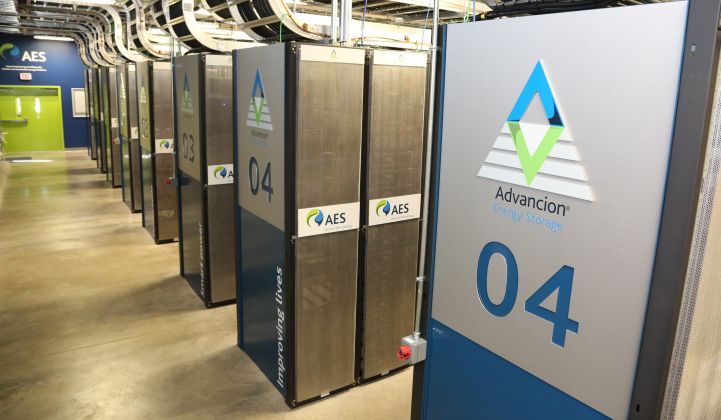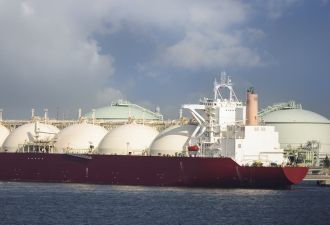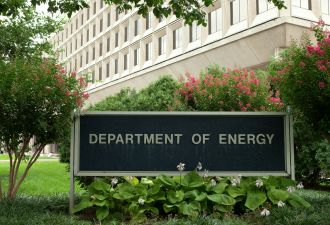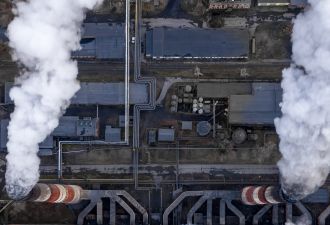The first storage supergroup has arrived.
Fluence, the new joint venture from major industry players Siemens and AES Energy Storage, kicked off operations at the start of the new year. The company is positioning itself as a global heavyweight system provider capable of tackling everything from commercial projects up to the rarefied "100 megawatt club."
"We’ve been one of the early leaders," COO John Zahurancik told GTM. "We’re planning to stay there as one of the leaders. We’re looking at things all over the world."
The pairing combines AES' decade of experience developing large utility-scale storage with Siemens' commercial expertise and global sales presence. The company announced a dedicated project financing program from Siemens Financial Services, which will simplify and shorten the timeline to finance upcoming projects.
That could prove to be a key differentiator in a young industry that still struggles with readily available financing.
The company also rolled out a new product optimized for the budding solar-plus-storage market.
The leadership roster has finally become public, and it features an even split in C-suite roles between AES and Siemens personnel, with AES taking the top spot:
- President and CEO: Stephen Coughlin, formerly vice president for energy storage platforms at AES Corporation, the parent company of AES Energy Storage
- COO: John Zahurancik, formerly president of AES Energy Storage
- CFO: Dennis Fehr, formerly vice president of business administration for medium-voltage solutions at Siemens
- CTO: Johannes Reinschke, formerly head of R&D for active power systems and storage at Siemens’ medium-voltage solutions unit
The 100 megawatt club
Fluence's first big contract will sound familiar to anyone who's been watching the utility-scale storage scene in recent years: It's the 100-megawatt/400-megawatt-hour project for Southern California Edison in Long Beach.
AES won the contract to build that project back in 2014. The system, which will sit inside its own building at the Alamitos Power Center, needs to come online by 2021 as California's once-through cooling plants shut down.
Under the newly announced contract, Fluence will supply the equipment to the Alamitos project, Zahurancik said. Ground-breaking at the site will start later this year, and construction and commissioning should take about two years.
Once complete, the system will serve local capacity, but SCE will be able to dispatch it for other roles like absorbing peak solar production and mitigating evening ramp rates for thermal plants.
This project will grant entrance into what Zahurancik calls the "100 megawatt club."
Currently, only Tesla enjoys that distinction, thanks to its 100-megawatt/129-megawatt-hour system in South Australia. The Alamitos project would seize back the title of world's largest battery, which AES previously held with its 30-megawatt/120-megawatt-hour system in Escondido, California.
That jockeying at the top is likely to continue.
"This will go back and forth a bit over the next few years -- we’re at a developmental time period," Zahurancik said. But, he added, there are diminishing returns to going much bigger than 100 megawatts, because such centralization sacrifices the benefits of distributed resources.
"In many power systems, having multiple 50-megawatt systems at different parts of the grid may be a better benefit than having one 200-megawatt system," he said.
Experience working on the largest scale of storage deployments sets Tesla and AES apart from the competition. Additional firms may rise to that scale in the coming years, but in the meantime, Fluence hopes to distinguish itself with a global sales team and many years of experience building storage in different markets.
"We’ve seen so many different situations in working with partners and customers that we’re very confident in our ability to work with anyone and get them to a very high-performing system," Zahurancik said.
Dedicated financing stream
Fluence tapped another benefit from its corporate consolidation: dedicated financing via Siemens' financial services unit.
Siemens financial services had vetted both AES' Advancion platform and the C&I-scale Siestorage product for previous deployments. Now the firm is offering a range of products for Fluence customers, including lease and performance contract options for smaller commercial projects and project financing for grid-scale efforts.
Previously, AES Energy Storage had to pursue financing arrangements with different lenders on a project-by-project basis. It takes considerable time and effort for lenders to familiarize themselves with emerging technology, so financing has been hard to come by for the storage industry in general.
The pre-clearance of the technology from Siemens financial services could shave weeks or months off the financing timeline, Zahurancik said.
"We saw the impact that more access to capital has had on renewables," he added. "Our belief is it will have a similar effect on storage."
Tapping the hybrid market
2017 was the year everyone in solar started talking about pairing their product with storage. Over the next couple of years, real market opportunities will emerge.
"We were seeing enough interest and demand that we wanted to codify that into a product platform," Zahurancik said.
The result is SunFlex, which provides unified controls and power conversion for co-located solar and storage. Fluence intends to be the system technology provider, selling to solar developers or project owners.
The product firms up solar generation and can increase utilization of land and transmission infrastructure by storing power that would otherwise be clipped by limitations on interconnection.
Market opportunities to sell such systems remain scarce. Even AES, for all its storage mega-projects deployed, has only done solar-plus-storage at the scale of a couple of megawatts.
The company will initially target constrained island environments that struggle with expensive fuel imports and increased solar generation, as well as places that put a high value on capacity, Zahurancik said.




